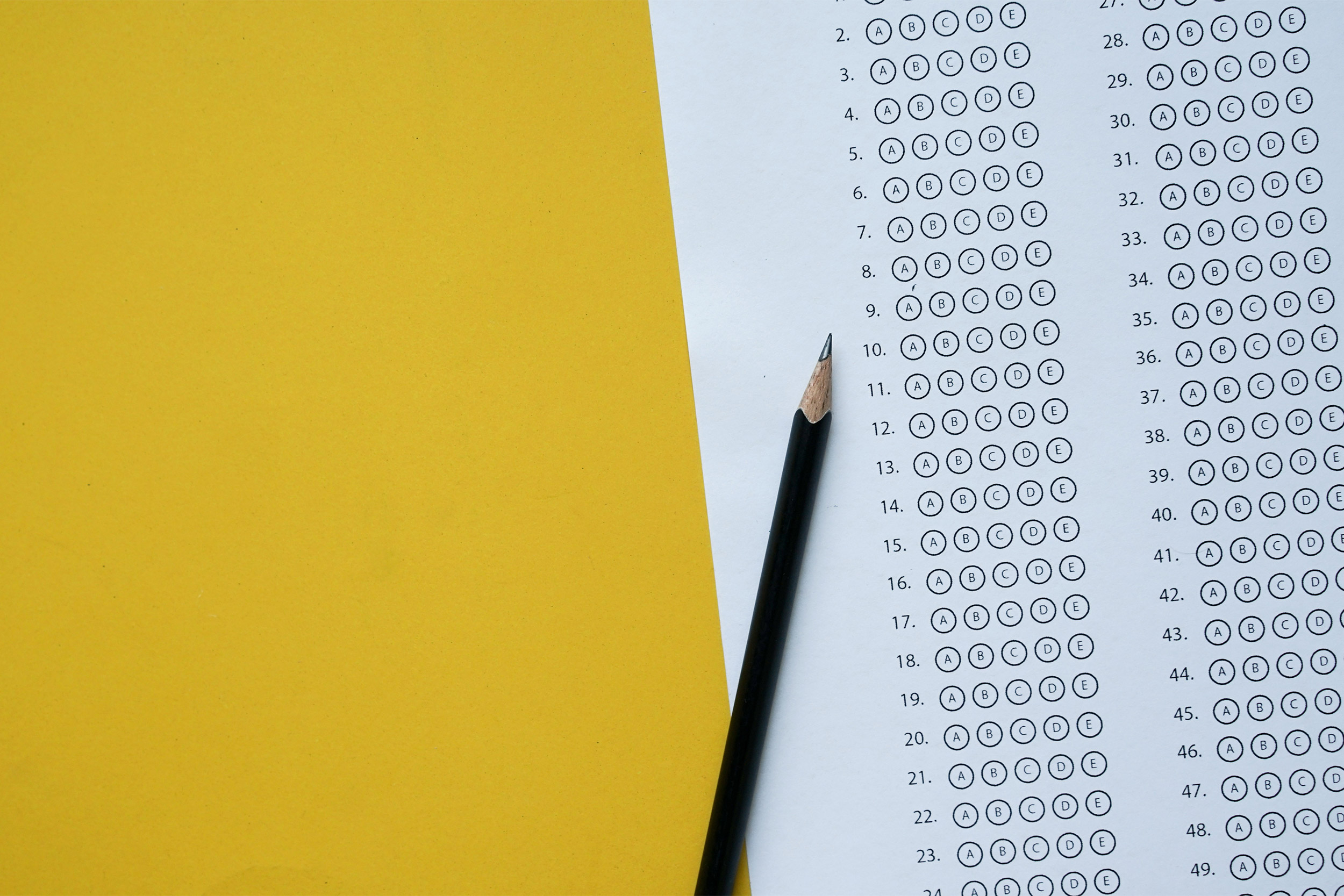New study finds wide gap in SAT/ACT test scores between wealthy, lower-income kids

Opportunity Insights researcher notes how opportunity, preparation differences begin early, play major role in success, suggests possible solutions
A recent paper released by Opportunity Insights, a Harvard-based team of researchers and policy analysts, found that children of the wealthiest 1 percent of Americans were 13 times likelier than the children of low-income families to score 1300 or higher on SAT/ACT tests.
Written by economists Raj Chetty, John Friedman, and David Deming, the paper highlights the role of disparities in education. These inequities follow students from the earliest years of life and education through high school and beyond. They surface in SAT/ACT college-preparatory test scores as a gap between the groups that affects who gets into the nation’s top colleges and universities — and so is best positioned for later success.
The Gazette spoke with Deming, the Isabelle and Scott Black Professor of Political Economy at Harvard Kennedy School and professor of education and economics at Harvard Graduate School of Education, about the paper’s findings and the possible solutions.
Q&A
David Deming
GAZETTE: What struck you most about the latest findings on SAT scores?
DEMING: Everybody knows that access to opportunity in America is unequal. Everybody knows that families from low- and middle-income families don’t receive the same opportunities as children from high-income families. I knew that going in and yet looking at the numbers, seeing data on the universe of SATs and ACT test-takers makes you realize the scale of the disparities. What we saw was the accumulation of unequal opportunities over 18 years of a child’s life that culminates in these differences in scores on college preparation exams. I think that’s what is new — seeing it all kind of put together and seeing the magnitude of the disparities. It’s pretty sobering.
GAZETTE: What are the factors behind the disparities?
DEMING: It starts from an early age. There’s a lot of good research suggesting that the first day that kids show up at kindergarten, there are already differences in academic preparation between children from low-income families and children from high-income families. It’s differences in vocabulary and in readiness to learn; whether kids can sit still and listen; whether they can play well with others; whether they’re in good health. All those things contribute to a young child’s ability to absorb what school has prepared for them.
Access to opportunities becomes more unequal as children age, but that’s mostly access to out-of-school opportunities. As kids grow up, children from families with means can go to summer camp or intensive summer courses, or they’re able to play on travel sports teams and get experience working in groups, etc.
Primarily, the out-of-school time is where you see the inequality emerge, and it tends to increase with time. I think American schools could be doing more, but it’s not actually about what’s happening in the classroom as much as what’s happening outside of the classroom.
GAZETTE: Let’s talk about one of the paper’s findings. What percentage of low-income children take the SAT test? What percentage score 1300 or higher?
DEMING: For children from the bottom 20 percent of the income distribution, only about a quarter of them take an SAT or ACT test. Among those, only about 2.5 percent score 1300 or higher. You can see right there what we’re up against in terms of economic inequality in college admissions and success in college and in life.
GAZETTE: What about children from high-income families? What percentage of them take the SAT test and how many score 1300 or higher?
DEMING: Of course, most of them take the SAT or ACT tests — about 80 percent or more. They’re more likely to take the test, and they’re much more likely to score above 1300. Among SAT test-takers who are in the top 20 percent of the income distribution, about 17 percent score 1300 or higher, so roughly one in six.

“The reason this is news is because people didn’t realize how bad the problem was,” said economist David Deming.
Photo by Dylan Goodman
GAZETTE: Some experts say the SAT test has become a sort of “wealth test.” What’s your take on this?
DEMING: I think that’s a little bit misleading. And the reason is that everything that matters in college admissions is related to wealth, including the SATs. I think when people call it a wealth test, they mean to delegitimize it as a measure of who can succeed in school. And the reality is that the SAT test does predict success in college. The SAT does capture something about whether you’re ready to do college level work.
I would urge us to create conditions under which there are more low- and middle-income students who can do well on the test, not to get rid of the test. Getting rid of the test doesn’t make the disparity go away. It just makes it invisible in the eyes of the public. For me, that’s the wrong direction.
Also, if you get rid of the SAT, as many colleges have done, what you have left is things that are also related to wealth, probably even more so. Whether you can write a persuasive college essay, whether you can have the kinds of experiences that give you high ratings for extracurricular activities and leadership; those things are incredibly related to wealth.
My worry is that if we get rid of the SAT, you’re getting rid of the only way that a low-income student who’s academically talented has to distinguish themselves. Getting rid of the SAT means those people don’t have the opportunity to be noticed. I don’t think the SAT is perfect, but I think the problem isn’t the test. The problem is everything that happens before the test.
GAZETTE: What policy steps would you recommend to address the disparities that are reflected in your paper?
DEMING: Diagnosing the problem correctly is the first step toward finding a solution. These data are sobering and discouraging, but without being able to see the data, we wouldn’t even know the magnitude of the problem. The reason this is news is because people didn’t realize how bad the problem was. I would urge us to do more of that rather than less.
There’s been a movement away from testing in schools. One can debate whether in a well-functioning school you need regular tests, but they’re certainly needed in places with big income disparities in achievement. What I would encourage is much more focus on the problem of inequalities in academic achievement and other measures of success in schools that serve low-income students.
I would also encourage us to spend more money in schools where students are falling behind and to do it in straightforward ways, which involves more instruction time in schools, paying teachers more, hiring tutors to help students remediate deficiencies, and laser-focusing on increasing the share of low- and middle-income students who are ready to do college-level work. That involves a lot of resources and political capital. Even though I’m a researcher, I think this is an area where we don’t need more research; it’s an area where the political will and attention are needed.
GAZETTE: You have called for a Marshall Plan for education to address the achievement gaps and inequities in education. What would such a plan entail?
DEMING: My view is that in the long sweep of history, it’s generally been true that as we live longer, we become more prosperous as a society, and work becomes more complex. People need more education and not less. And even though we’re in a moment today where college is kind of unpopular, I think that’ll end up looking short-sighted.
There’s no law of nature saying that only some people are college material and others are high school material. A century ago, the high school graduation rate in this country was 14 percent. Today, it’s over 90 percent. I’m sure that 100 years ago, people said that not everyone is high school material.
In the long run, we need everyone to get more and better education to better serve our society because the knowledge that is required to be a productive employee is way higher than it used to be. It makes sense that if we’re more prosperous and living longer, we want more education, better health, and things that lead to human flourishing. I’d like for us, as a society, to prioritize education more, and to address disparities as we’ve done before in American history.
Literacy and high school graduation are now nearly universal. That didn’t happen by accident. It happened through focused investments. I think we need to do that again; investing in education to help people prepare for team-based work, become critical thinkers, and how to use tools like AI and other technologies. All of that is necessary to move society forward in the 21st century. It’s a refocusing of our society on building skills, educating people, eliminating disparities by income, and leading to more opportunity for everybody. That’s what I’d like to see.




